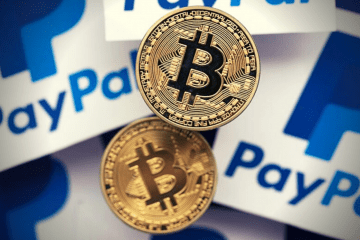Crypto Wallet: Its Requirements, Mechanism, and Everything You Need to Know
Basically, a software program, a cryptocurrency wallet, is a secure digital wallet that stores public and private keys. It enables users to store, send, and receive digital currencies and monitor their balance.
How Does It Work?
Crypto wallets do not store currency, unlike traditional fiat wallets. It is a known fact that cryptocurrencies are neither stored in a single location nor exist in physical form. In any digital currency transaction, the sender signs off their coin ownership to the receiver’s wallet address. To spend the funds, the private key (in the receiver’s wallet) and the public address (assigned to the cryptocurrency) should match if both the keys match, the balance in the receiver’s wallet increases while the sender’s decreases accordingly. The transaction record stored on the blockchain and a difference in the balance signifies the exchange.
Cryptocurrency Wallets and Its Types
Crypto wallets are categorized into two distinct types: hot wallets and cold wallets.
Hot (software) wallets
| Desktop | 1. Is it only accessible from the system in which it is installed? 2. Connects directly to a client’s coin. 3. Examples: Ethereum (Mist) and Bitcoin (Electrum). |
| Mobile | 1. Smaller, flexible, and carries out the same functions as a desktop wallet. 2. Facilitates payment from anywhere and even in physical stores via QR code scan to any merchant accepting digital currency. 3. Examples: Jaxx wallet and Hive. |
| Web | 1. Runs on cloud and accessible from any computing device from anywhere. 2. Considered least secure since users have no control over the private key. 3. Example: MyEtherWallet |
Cold Wallets
| Hardware | 1. Resembles a USB stick and holds the private key. 2. It facilitates online transactions and is also stored offline. 3. Compatible with many web interfaces and supports different currencies. 4. Just plug in the device to any internet-enabled system, enter a pin, send currency, and confirm. 5. Example: Trezor |
| Paper | 1. Generates a pair of private keys that are then printed. 2. Facilitates fund transfer from a software wallet to the public address given on paper wallet and vice versa for withdrawals and spending. |
Is a Crypto Wallet Risky?
Any wallet is always at risk. Crypto wallets possess both direct and indirect risks.
Indirect risks: Those such as government regulations or ban on cryptocurrencies, and nothing can be done about the same.
Direct Risks: Risks associated with hardware wallets are relatively low, but never keep a phrase of written recovery lying around. And, as for paper wallets, it is paper so anything bad can happen to it.
The software wallets pose the maximum risk. They are as vulnerable as the system they are installed on. Hacker threats, and loss or theft of the device always loom over. Therefore, never ever be careless or ignorant about money, be it crypto or traditional.
- Backup the wallet. Check if the crypto wallet stores the private keys in encrypted form.
- Keep the two-factor authentication ON.
- Regularly update the software
- Use fingerprint authentication on a smartphone
- Use a strong and long password for hot wallets
Risk Mitigation
It is quite a big list but remembers the following tips always:
- Download or buy directly or from a trusted seller
- Never accept or purchase a used hardware wallet
- Never store private keys online (mail or cloud)
- Do not transfer funds via social media
- Never share the private key or recovery seed with anyone
Final Remarks
Understanding the advantages and potential perils of diving into the crypto wallet wave will greatly improve the prospects of cryptocurrencies in the long term and broaden their adoption as well.


